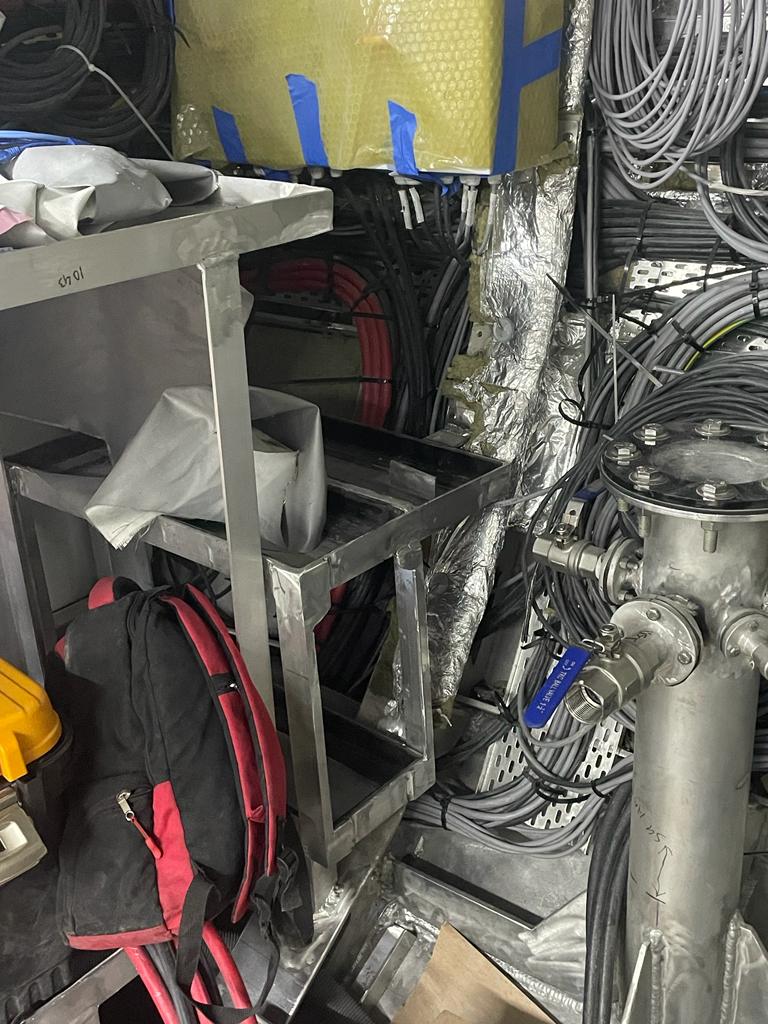Weekly Update - Antifouling and House Batteries
- Chris Leigh-Jones
- Aug 11, 2023
- 3 min read
Antifouling our Explorer Yacht
So we came to the subject of antifouling. In the good old days of my youth, we used TBTs and latterly got clever with self-polishing paints also laced with various marine poisons. They worked well until you realize they worked too well, slowly killing all around them. 2008 the IMO banned TBT, and the replacements were, in the main ... rubbish. But have improved since we now have a lot to choose from.
Aluminum hulls and copper-based epoxy paints are maybe not the best combination, so what else was successful? We did not look long; our sister vessel Mobius used a slippery antifouling system with good results— Intersleek 1100SR from International Paints. Well done, Wayne, for researching this one. It is not even toxic, relying instead on a very slippery silicone-impregnated surface to release slimes and biofouling as soon as the hull gets underway. Rather than write more, I'd refer you to Wayne's Blog HERE, which explains everything briefly. Its use even earns "carbon credits," if you mind!
The photo shows the final fairing and prep work around the rudder and anode attachment. This will be primed with a proprietary epoxy before the application of antifoul.
We needed to decide on the waterline and chose a fully loaded condition as the high water mark. But how do you define fully loaded as not "full tanks"? We have four water tanks containing a maximum of 7.5 tons of fresh water and seven fuel tanks containing 9.9 tonnes of diesel. As we consume fuel, we compensate for the trim by adding fresh water as ballast. So our base condition was full fuel tanks (9.9t), one full water tank (1.5T), and even a keel. In practice, we should operate with tanks in a state of partial discharge (avoiding slack tanks) and a lesser draft.
Masking tape now adorns the full-load water line, and the surface below is prepared for primer application. Then several coats of Intersleek 1100 per the manufacturer's instructions on everything wetted except for the Brunton's self-tailing propellers. Naval Yachts will use a local paint crew from Damen Shipbuilding. They have good experience in applying this particular product. After feedback from Mobius, we also placed a large hull protector in the way of the even larger anchor. A 110kg Rocna anchor plus chain taking swings at the hull can potentially do some damage. The plate is through-bolted rather than simply adhered to the paint.
Update on the internals
The build has progressed internally with the population of the instrument panels and the completion of the cabins. The washing machine proved reluctant to fit down the stairway resulting in a small bulkhead modification that will make removal far easier.
We can stare at a CAD drawing for eternity, but there is nothing like a physical shape for a dose of reality. See 100mm cutout on the side bulkhead allowing the washing machine to round the corner into the laundry and visually opening up the space. Chances are we will replace the washer at some event or other.
Similarly, as the engine room progressed, Naval completed the seawater intake, and the house batteries were moved to the engine room.
We found an unused triangular space in the engine room by the workbench. Much easier access and visuals going forward and shorter cable runs.
UK MCA MGN280 stipulated that the maximum battery charge rate for the house batteries must be limited to 2kW (each), or they need a vented enclosure. That is a reasonable constant charging rate, and we will restrict the input current using the Victron Skylla charge controllers. House batteries can be charged from Solar (6.5kW peak), shore power (5kW constant), or power batteries.
Final thoughts
My last thought of the week is that there seems to be a constant stream of problems toward the end of a build. How we approach those problems greatly affects the journey itself. There are always solutions, whether acceptance, an engineering alteration, or an alternative path. The Owner and the Yard have the same goal, a successful launch. It is best to resist the temptation to blame or otherwise become adversarial. I'm just saying!
Chris Leigh-Jones















